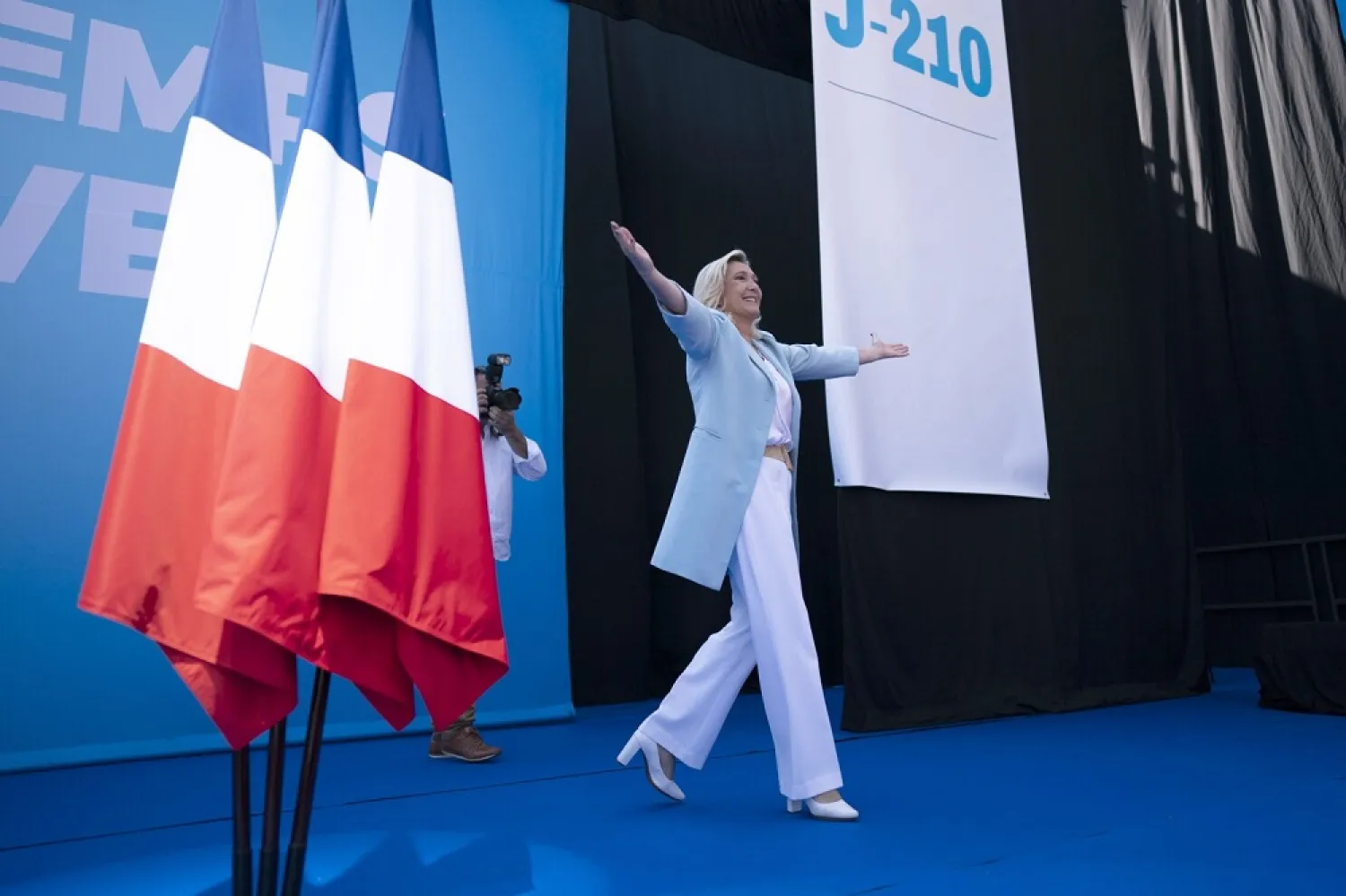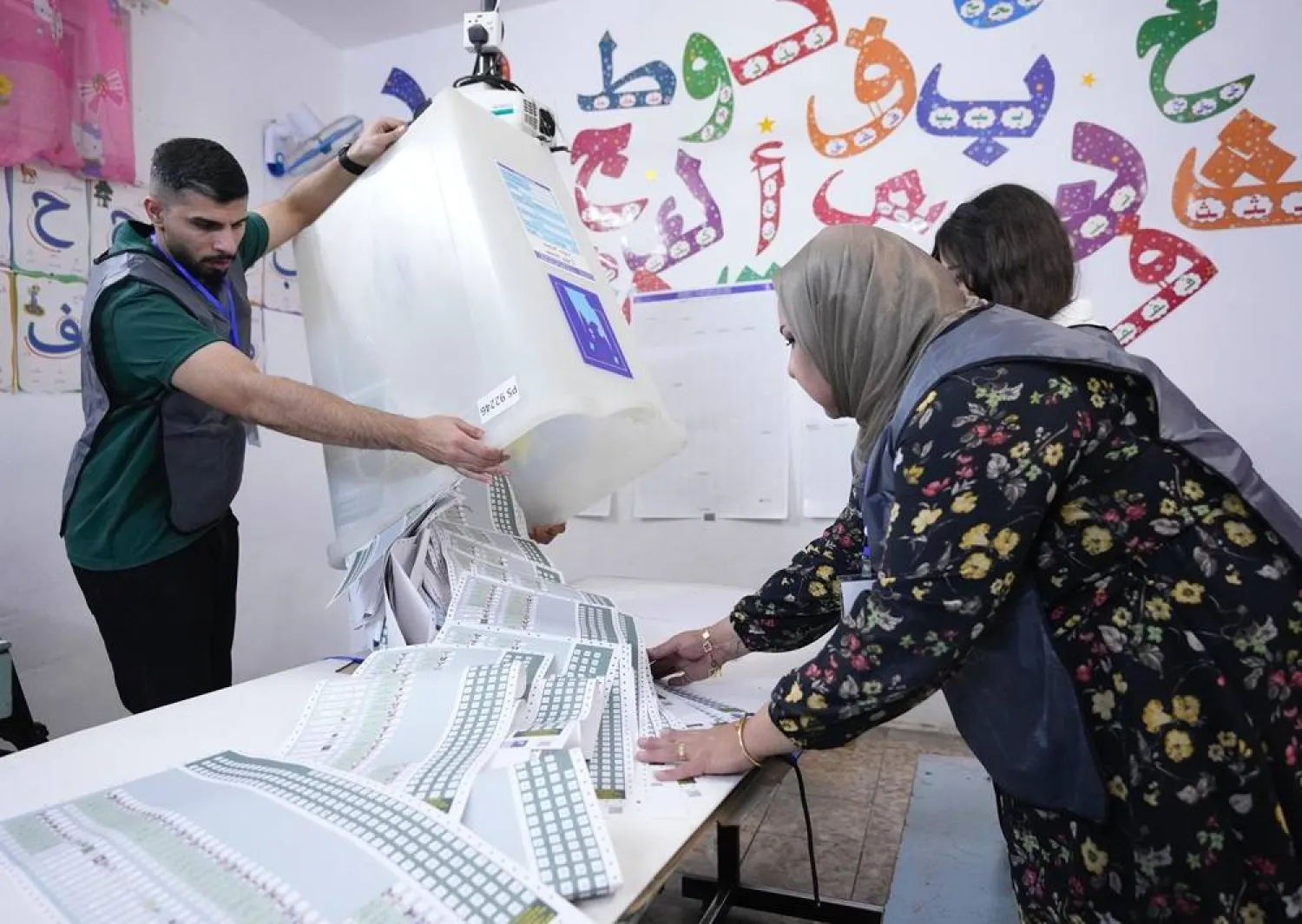French nationalist leader Marine Le Pen has softened her rhetoric and her image to broaden her appeal in next week’s presidential election — but is under threat from a provocative rival who has broken her monopoly as the watchdog of the country’s identity that they claim is under threat.
For more than a decade, Le Pen has been known for her fierce anti-immigration stance, seeing herself as standing guard at the parapets of French civilization. Now she is honing in on consumers' buying power, the top concern for voters.
“I obviously consider that immigration and insecurity are serious problems which need urgent answers, but there’s not just that,” said Le Pen, head of the National Rally party, during a TV show featuring voters’ questions. “I worry about making ends meet as much as the end of France.”
Meanwhile, Eric Zemmour, 63, a political novice running under the banner of his newly created Reconquest! party, is now portraying himself as the protector of old France, with bold proposals on immigration and Islam. He has proposed a “Remigration Ministry,” equipped with airplanes to expedite the expulsions of what he says are undesirable migrants.
Their rivalry illustrates France’s increasing tilt toward the hard right and how that has set the agenda for the presidential election, held in two rounds on April 10 and 24. While polls suggest centrist President Emmanuel Macron is the front-runner, nearly half of respondents say they're ready to vote for a far-right candidate in the decisive runoff.
And that's despite the fact that Zemmour, a TV pundit who models himself after former US President Donald Trump, has been convicted three times of inciting racial or religious hatred.
Zemmour, who said he entered the race to “save France,” has made the conspiracy theory known as the “great replacement” the centerpiece of his campaign. The term evokes a false white supremacist claim that immigrants and other people of color — notably Muslims — are supplanting natives of Western countries and will one day erase Christian civilization.
He recently alleged that without a stop to immigration, France will become “an African nation, an Islamic nation” in 10-20 years. A large majority of French people are white Catholics, and immigration evolution statistics contradict his claim.
Zemmour’s political goal is to create a “union of the right,” bringing together conservatives, including traditional Catholics, and far-right parties. Le Pen, who also decries “migratory submersion,” says her goal is the “union of France.”
Polls of voters suggest that Le Pen’s focus on pocketbook issues may be working. They show her consistently second to Macron, with Zemmour in third or fourth place. That could put her in a runoff against Macron, a repeat of their 2017 standoff, which she lost 66%-34%.
This time, the two far-right candidates together are drawing more support than the centrist president, making their supporters a threat to the established order.
A low voter turnout could render useless all pre-election calculations. Le Pen’s party is still stinging from her party’s failure in last summer’s regional balloting, blamed on a turnout of only 33% of voters in the first round.
Le Pen’s emphasis on buying power is in line with her work to detoxify her party since taking the reins from her father, Jean-Marie Le Pen, the firebrand leader of what was then the National Front. She changed the party name and then expelled him after he reiterated antisemitic remarks for which he was once convicted.
Her father, who now backs her new presidential bid, once compared her to Diet Coke, saying that her ridding the party of hard-liners was like diluting its values.
A batch of officials and their supporters have deserted her for the more extreme Zemmour. She slammed most of them with insults — except for her niece, Marion Marechal, a popular former lawmaker who has returned to politics to help Zemmour.
“Poor Marion,” Le Pen said, lamenting Marechal's role as a “life preserver” for Zemmour.
Sylvain Crepon, a National Rally specialist, said Zemmour doesn’t pose a serious threat. He says it is Le Pen who embodies nationalist ideas, and “in the end, voters prefer the original to the copy.”
The 53-year-old Le Pen, who represents northern France and is in her third presidential race, has adopted a less-aggressive tone, and she has all but ditched her signature navy blue wardrobe in favor of pastels.
On policy issues, she is stressing concerns that speak to those struggling to make ends meet. She also has dropped her earlier goals of quitting the European Union and abandoning the euro.
But her nationalist strain remains firm. If elected, Le Pen plans drastic measures — to be put to a vote in a nationwide referendum — to contain immigration and “eradicate” political Islam. Among them is ending the policy of family regrouping, which allows immigrants to take up French residence if a close relative is a resident. Like Zemmour, she would expel delinquent foreigners and those who have not been employed for at least a year.
She says she honors the religion of Islam but vows to ban Muslims from wearing headscarves on the street, calling them an “Islamist uniform.”
In public appearances, however, the spotlight is often on the everyday problems of the middle class and the working class, her base of support. Her platform calls for measures to soften the blow of rising prices, like slashing taxes on energy bills from 20% to 5.5%. Le Pen promises to put 150-200 euros per month back in people’s pockets.
“What she has understood is subjects that interest the French that are not ideological topics” like paying bills, said Jean-Yves Camus, a leading expert on the far right.
“Eric Zemmour says that the only important subject is the end of France," Camus said. “The French don’t necessarily believe that France is finished. And if you want France not to be finished, you have to give it buying power.”
For Macron, Le Pen is the candidate to beat.
The Macron camp has worried openly about an electoral “accident," perhaps through low turnout by moderate voters, that could put Le Pen in power.
Economy Minister Bruno Le Maire decried Le Pen's “stupefying metamorphosis.”
“Don’t let yourselves believe that we’re the elite and she is the people,” the French press quoted him as saying on a visit to Normandy.
Romain Lopez, mayor of the southwestern town of Moissac and a member of Le Pen’s party, says he'll vote for Zemmour in the first round but will support Le Pen in the runoff if Zemmour fails.
“Zemmour gave himself a glass ceiling with his excesses of language,” said Lopez, citing the policies of “remigration.”
Lopez is looking past the election, when he believes a new party will emerge on the right with a major role for Le Pen's niece, Marechal.
For far-right expert Camus, Zemmour has helped Le Pen by making her appear more palatable.
A presidential candidate must bring voters together, and that's what Le Pen has done, he said.
“At some point, you are obliged, as the French say, to put water in your wine, accept compromise,” Camus said. "You’re obliged to make proposals that unite not 40% of voters but 50.1%.”









